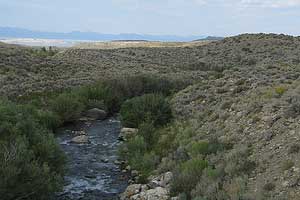Category: Nature
-

Wet Winter Means Good News For Mono Lake
Lots of snow in the Sierra means lots of water for Mono Lake.
-
Don’t Miss the Dogwoods
Yes, in case you haven’t been paying attention, it’s that magical time when all the Dogwood trees in Yosemite Valley bloom and this awesome black and white by Bill Head is proof that you need to head up to Yosemite this weekend with your camera before you miss this spectacular event. The Dogwoods bloom a…
-
Watch for Bald Eagles along the Merced River
Watch for frequent sightings of bald eagles along Merced River (Hwy. 140). Did you know: It takes four years for bird to develop white head. @YosemiteScience.
-
Don’t Bring Your Own Firewood to Yosemite
While not necessarily an invasive species, this photo shows the damage that bugs can do to trees in Yosemite. Photo by Letsgetridofny. @YosemiteScience posted a link to this interesting page I hadn’t seen before. Yosemite National Park Service officials are asking that you don’t bring your own firewood into the park. Why? Because it can…
-
Wildflowers!
Beautiful wildflowers in Yosemite. Photo by Michelle H. It’s March and you know what that means, wildflowers! It looks like it’s going to be another spectacular show this year in the Merced Canyon as recent rains have really greened up the hills and given the flowers plenty of water. If you’ve never been to Yosemite…
-
Global Warming Could Be Helping Yosemite’s Aspens
Aspens along the Highway 395 corridor just east of Yosemite’s Tioga Pass entrance. Photo by Loyd Schutte. Researchers have come up with some interesting findings regarding Carbon Dioxide, the green gas believed to be largely responsible for global warming, it’s making the aspen trees grow like mad! The study conducted by researchers from the University…
-
Yosemite Bears Targeting Minivans
A tagged black bear in Yosemite Valley. Photo by Simon Phipps. Yes, it’s true, Researchers have found that black bears searching for food in Yosemite National Park have been targeting minivans over other types of vehicles. In a recent article that appeared in the Journal of Mammology, researchers have found that black bears in Yosemite…
-
Caution: Deer Entering Roadway
Deer in the headlights. Photo by Bert Dennison. Mule deer are beginning their yearly migration from the mountains to the foothills after the recent storm dusted the Sierra Nevada with the season’s first snow. Drivers are advised to use caution especially the first few hours before and after dawn and sunset when deer actively move…